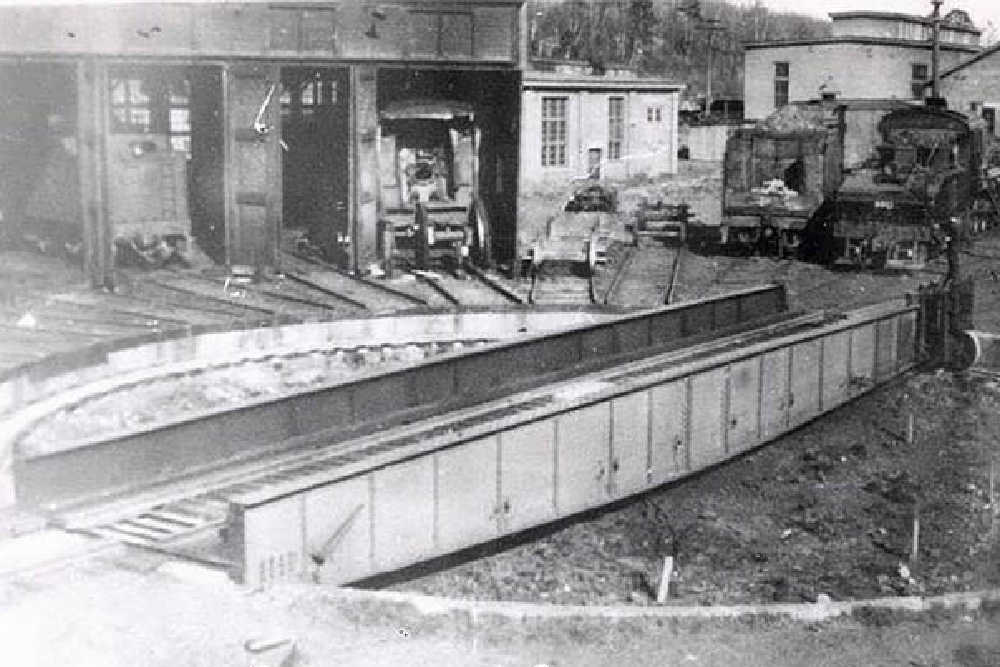
Turntable
One of the more unusual features of the steam locomotive era in Nova Scotia was a bridge-like structure placed in a hole that could be turned on a guiding rail by hand or using an attached motor. The diesel locomotives that replaced the old steamers are mostly bi-directional, so turntables fell out of favour.
Now that more than 60 years have passed since the era of daily use of steam locomotives, only one turntable remains in use in the entire province. CN uses one at its Fairview Terminal in Halifax to turn locomotives end for end to provide an optimal driving position. This practice mirrors that which was essential in the days of steam locomotives.
Middleton never had a turntable, instead, a wye west of downtown connected two diverging tracks of the Canadian National Railways with the mainline of the Dominion Atlantic Railway. A locomotive could reverse direction and return to its point of origin by proceeding around the three tracks. In the case of CNR trains, this would have been to Bridgewater.

Photo courtesy of Jim Simmons Collection
With the donation of a turntable from the Nova Scotia Museum of Industry, the Middleton Railway Museum obtained this valuable artefact. In the future, we plan to install the turntable west of the station so that our exhibits may be turned from time to time. Ironically, the 75-foot-long steel turntable is the one from Bridgewater. Before the line’s abandonment in 1982, it would have turned locomotives, including those that hauled trains to Middleton.
Our turntable is well travelled. It was first installed at the division point of Monk, Quebec, midway on the now abandoned National Transcontinental (later the CNR) line between Edmundston, New Brunswick and Charny, Quebec. It was likely installed before the opening of the line in 1913. As larger locomotives entered service, it was replaced by a longer turntable and stored for some time in Toronto, Ontario. In 1936 it was installed in the CNR yard in Bridgewater.
It is an appropriate addition to our growing collection, including two significant, almost 120-year-old steam locomotives and two more modern industrial switchers.
Header Photo by Lee Hopkins

